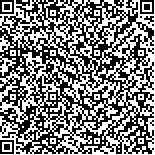王丙琰,孟萍萍,潘晓娜,等.不同侧小脑半球Theta爆发式经颅磁刺激对健康受试者吞咽调节效应的影响[J].中华物理医学与康复杂志,2023,45(5):408-413
扫码阅读全文

|
| 不同侧小脑半球Theta爆发式经颅磁刺激对健康受试者吞咽调节效应的影响 |
|
| |
| DOI:10.3760/cma.j.issn.0254-1424.2023.05.005 |
| 中文关键词: 吞咽 小脑 间歇性Theta爆发式经颅磁刺激 运动诱发电位 |
| 英文关键词: Swallowing Cerebellum Theta burst stimulation Motor evoked potentials |
| 基金项目:山东省自然科学基金(ZR2020MH282);青岛市医疗卫生优秀人才培养项目 |
|
| 摘要点击次数: 4639 |
| 全文下载次数: 4436 |
| 中文摘要: |
| 目的 观察间歇性Theta爆发式经颅磁刺激(iTBS)对健康受试者大脑吞咽运动皮质和小脑吞咽运动区兴奋性的影响,并探讨小脑iTBS调节吞咽功能的机制。 方法 采用随机数字表法将44例右利手健康受试者分为优势侧小脑组(15例)、非优势侧小脑组(15例)、对照组(14例)。优势侧小脑组给予优势侧小脑iTBS干预和非优势侧小脑假刺激,非优势侧小脑组给予优势侧小脑假刺激和非优势侧小脑iTBS干预,对照组给予双侧小脑假刺激。iTBS干预前后,分别对受试者双侧大脑和双侧小脑的舌骨上肌群代表区进行单脉冲经颅磁刺激(TMS)测定,观察受试者运动诱发电位(MEP)波幅和潜伏期的变化。 结果 与组内干预前比较,非优势侧小脑组干预后双侧大脑吞咽皮质和刺激同侧小脑的MEP波幅升高(P<0.05);优势侧小脑组干预后仅刺激同侧小脑的MEP波幅升高(P<0.05)。在MEP波幅与基线相比的百分比变化方面,与对照组干预后同指标比较,非优势侧小脑组刺激双侧大脑皮质和刺激同侧小脑的数值较高(P<0.05);与非优势侧小脑组干预后同指标比较,优势侧小脑组刺激双侧大脑皮质的数值较低(P<0.05)。3组受试者MEP潜伏期、MEP潜伏期与基线相比的百分比变化,组内及组间比较差异无统计学意义(P>0.05)。 结论 非优势侧小脑半球与优势侧小脑半球iTBS对吞咽相关脑区均有一定的兴奋作用,但二者所兴奋的脑区有所差异。 |
| 英文摘要: |
| Objective To observe any stimulatory effect of intermittent theta burst stimulation (iTBS) on the cerebral swallowing cortex and the cerebellar swallowing motor area and to explore the related mechanisms. Methods Forty-four healthy right-handed subjects were divided at random into a dominant cerebellum group (n=15), a non-dominant cerebellum group (n=15) and a control group (n=14). In the dominant cerebellum group, iTBS was administered to the cerebellum of the dominant hemisphere, and the other hemisphere was given sham stimulation. In the non-dominant cerebellum group, it was the opposite. The dominant cerebellum received the sham stimulation. In the control group both hemispheres received sham stimulation. Before and after the stimulation, single-pulse transcranial magnetic stimulation (TMS) was applied to the representative regions of suprahyoid muscles in bilateral brain and cerebellum to observe changes of the latency and amplitude of motor evoked potentials (MEPs). Results After the intervention the MEP amplitude of the bilateral swallowing cortex and the stimulated cerebellum had increased in the non-dominant cerebellum group, with increased MEP amplitude only from the stimulated cerebellum of the dominant cerebellum group. Compared with the control group, the non-dominant cerebellum group showed the greatest improvement in MEP amplitude of the stimulated bilateral cerebral cortex and cerebellum. Improvement in the dominant cerebellum group was significantly smaller. However, there were no significant differences in MEP latency or the percentage change in MEP latency from baseline among the three groups. Conclusions Applying iTBS to either the non-dominant or the dominant cerebellum excites the brain areas related to swallowing, but in different ways. |
|
查看全文
查看/发表评论 下载PDF阅读器 |
| 关闭 |